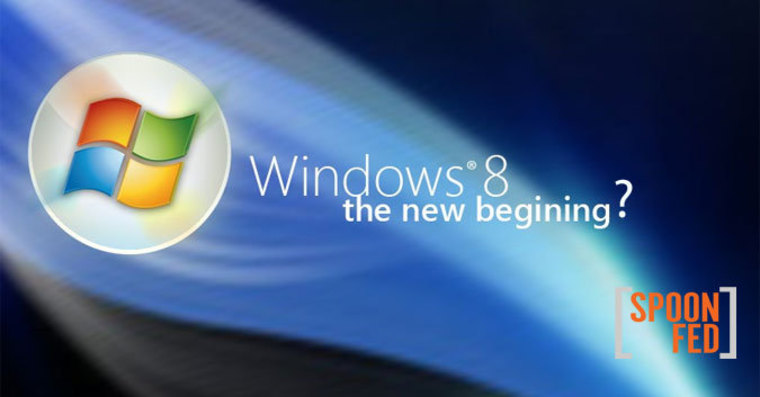By Mark Spoonauer
Laptop
Last weekend I accompanied my 20-something sister-in-law to a Best Buy to purchase an iPad 2. She previously considered buying a Windows laptop, but as it turns out Apple’s tablet does everything that she needs. And that’s a pretty scary thing for the PC industry. Cash-strapped consumers aren’t choosing tablets merely as complementary devices. Increasingly, it’s an either/or decision — and Windows is losing.
At its upcoming BUILD conference, Microsoft will try to convince me and others in attendance that the upcoming Windows 8 operating system will deliver “the best of both worlds” by combining a touch-friendly front end with the power of a traditional PC. But what happens when shoppers view the latter ingredient as dead weight? (Msnbc.com is a Microsoft-NBC Universal joint venture.)
This week Gartner reduced its PC shipment growth forecast from 9.3 to 3.8 percent, placing the blame on economic woes in Western Europe and the U.S. There’s another culprit though: the rise of tablets. According to Ranjit Atwal, research director at Gartner, those in Generation Y (like my sister-in-law) “are not buying PCs as their first, or necessarily main, device.” He also said that older buyers don’t see today’s PCs as compelling. Microsoft apparently got the same memo, as evidenced by its recent commercials that transform people’s homes into computer stores.
This marketing campaign is just a stop-gap measure. The real solution won’t arrive until this time next year when the first Windows 8 devices hit the market.
One of those devices will likely be a tablet made by Samsung, which Microsoft will reportedly unveil at BUILD next week. At CES in January we got a hands-on preview of Samsung’s Sliding Series 7, a Windows 7 tablet with a slide-out keyboard. However, this device never made it to market. We would have shelved the product, too. Windows 8 promises to be much more touch-friendly, with a Live Tile interface that’s similar to Windows Phone 7 and full-screen apps powered by HTML 5. So perhaps Samsung’s slider will be reborn.
That’s part of the best-of-both-worlds argument that Microsoft and its partners will try to make with Windows 8. You’ll see pure slate devices sold but also many tablets that let you access a full keyboard when you need it, such as the Sliding Series 7 and the Eee Pad Transformer. I personally would appreciate that kind of versatility, so long as I don’t have to compromise much in the way of portability.
It looks like Windows 8 devices will deliver the best of both worlds in another way. During a roundtable discussion earlier this week, Nvidia CEO Jen-Hsun Huang told reporters that the OS should be able to run Windows Phone 7 apps. This move makes perfect sense — assuming the apps scale well to larger displays — and it could encourage more developers to dedicate more resources to both of Microsoft’s platforms.
Windows 8 PCs won’t just run mobile apps. They’ll act like mobile devices. That’s because Microsoft says that it has found a way to boot machines to the OS in just 8 seconds. A new fast startup mode that’s a hybrid of the traditional cold boot and resuming from hibernate will be able to get you to the Metro UI faster than you can say “This is a PC?”
The toughest challenge for Microsoft is to prove to shoppers that having full-blown Windows running underneath a sleek interface isn’t a turn-off. For many consumers — especially those who have fled to Macs—Windows has become synonymous with incessant software updates, security headaches and needless complexity. Some of these reasons led to Apple’s Lion beating Windows 7 in our recent face-off.
Can Microsoft make the rest of Windows 8 just as inviting as that start screen? So far, some of the tweaks under the hood have spurred controversy. Last week, Windows President Steven Sinofsky defended the decision to opt for a Ribbon-style interface for Windows Explorer. This UI treatment, which presents multiple options along the top of the toolbar, resulted in a backlash a few years ago when it debuted on Microsoft Office. In a blog post, Sinofsky countered by saying that users should think of the desktop as just another app.
While writing this column on a Windows laptop, I had to reboot because my machine froze. This reinforced my strong belief that Microsoft’s ability to keep the PC alive doesn’t depend on the company’s ability to wow with touch or compelling apps. It comes down to whether Microsoft can convince consumers that they can continue to enjoy the PC’s versatility without the traditional PC baggage. That they made the right call in scaling down their desktop OS instead of starting from scratch like Apple did with iOS and the iPad. There’s a fine line between the best of both worlds and a world of hurt.
Editor-in-chief Mark Spoonauer directs Laptop’s online and print editorial content and has been covering mobile and wireless technology for over a decade. You can follow his SpoonFed column each week or on Twitter.
More Windows 8 stories from Laptop:
